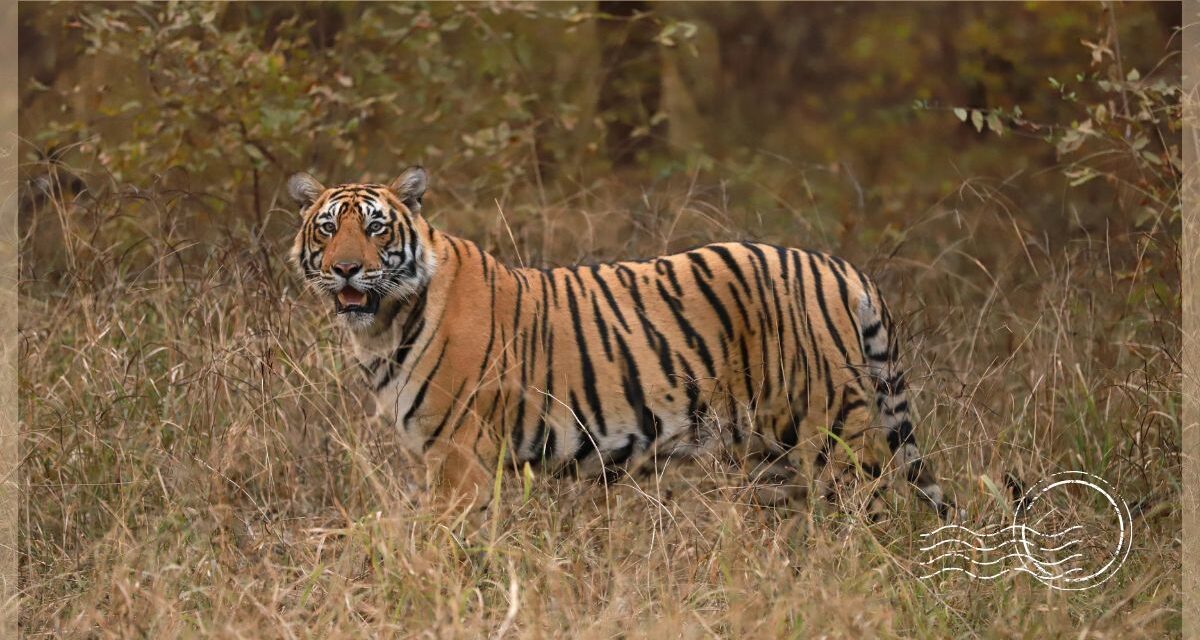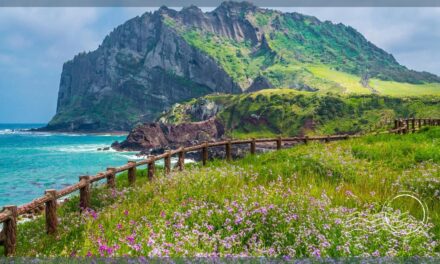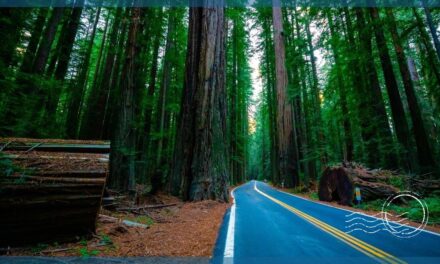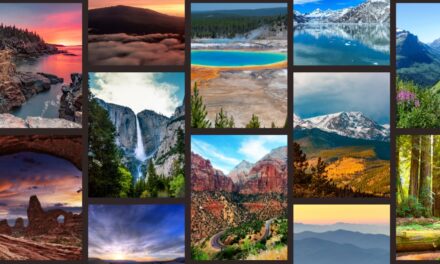If you are searching for an unforgettable, awe-inspiring moment to add to your travel bucket list, then spotting a tiger in the wild in India should be right on top.
Majestic, proud and fierce, this apex predator is India’s national animal and the country boasts of the highest population of tigers in the world.
Officially, during the last survey by the National Tiger Conservation Authority in 2018, there were 2,967 tigers in India.
Considering tiger conservation has been a real success in India with the numbers increasing each year, it would be fair to estimate the tiger population to be well over 3500 by now.
As far as tourists are concerned though, the main question still remains – where to spot tigers in India?
There are 53 total national tiger reserves in the country. Out of these, about 10 to 15 of them have heavy tourist footfalls.
However, just because you go on a tiger safari in one of the popular national parks in India, it does not mean you will actually get to see one.
Tiger’s are elusive beasts. They love to live alone, they hunt on their own and are masters in blending in with their environment. It is possible for a tiger to be meters away from you in the jungle but you may not know unless they choose to show themselves.
With that in mind and to try to reduce disappointment, I have decided to focus on the nationals parks with the best chance to spot tigers in India.
Again, it is not a guarantee but simply places where the chances are higher for you to see a tiger in its full glory. Who knows, if you are really lucky you may even hear a tiger roar, something the locals believe only the blessed can experience.
Page Contents
Do’s and Don’ts of Tiger Safaris in India
Before we get into which are the best places in India to spot a tiger in the wild, here are some important do’s and don’ts of tiger safaris in the country.
1) Entry to any national tiger reserve in India needs prior permission. Bookings are straightforward and often done online. Always get your bookings done well in advance to get your preferred date and time.
2) Do book a hotel near the reserve as often due to tourist rush, you may not get accommodation at the last minute.
3) Do not wear flashy clothes, sparkling jewellery or wear heavy perfume when in the jungle. These may attract unwanted attention from wildlife or simply scare them away.
4) Do not use flash photography. This is a strict no. It may disorient the wildlife and if you are lucky to spot a tiger, the last thing you want is to anger him or her while you are open in the wild.
5) Do not talk loudly and listen to your guide or driver. Talking loudly often makes the tigers hide and you may not see them even if they are nearby.
6) Always respect the environment, flora and fauna in the jungles. Even if you can’t sight the tiger, you will see a plethora of incredible animals and birds considering Indian national parks are extremely rich in wildlife.
Our Top 6 National Parks with the Best Chance to Spot Tigers in India
These are our pick for the top national parks with the best chance to spot tigers in India
Note that these tiger reserves were chosen out of many considering the density of tigers, terrain, number of core zones and till where tourists are allowed.
Also, a key reason for choosing these national parks is we have personally spotted tigers here or have heard a lot of such stories from visitors over the years.
I have given a bonus location as well for spotting tigers in India in the wild after the main list – that one is only for the super adventurous.
1) Ranthambore National Park
Ranthambore National Park is located in the state of Rajasthan in Northern India.
The exact location is within the district of Sawai Madhopur in southeast Rajasthan. It is close to the state’s capital Jaipur at about 130 kms. It takes approximately 4 hours from Jaipur to Ranthambore National Park by road.
One of the reasons Ranthambore National Park is a popular reserve for spotting tigers in India is due to its terrain.
Rajasthan being a desert state, Ranthambore National Park has great visibility all around and is not covered by extensive green cover like other National parks. This makes spotting the tiger that much easier.
Many tourists get thrilled at the fact that often tigers walk on the same path as the jeep visitors have to use for the safari.
Ranthambore National Park is not just famous for its Royal Bengal Tiger population but a variety of other incredible wildlife.
Timings:
Ranthambore National Park is open Monday to Saturday from 6am to 7pm.
For Jeep Safaris, the timings are 7am to 10.30am and 2.30pm to 6pm.
Please note that the timings can differ by about half an hour depending upon the season. Sundays and monsoon months of July to September, the park remains closed for tourists.
Best time to visit:
The best time to visit Ranthambore National Park is between late October to March.
This is mainly as the weather is relatively cooler during this time. Being located in Rajasthan, the summer months can be extremely tough for tourists with temperatures reaching 48 degrees Celsius at certain times.
2) Jim Corbett National Park
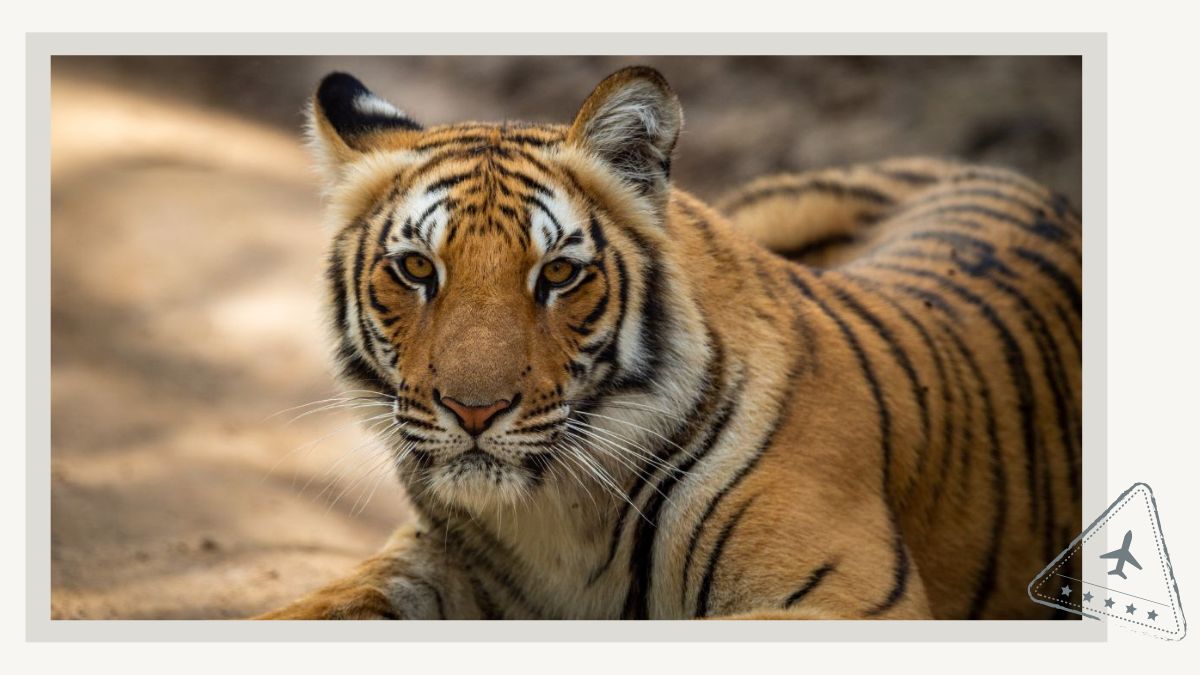
Jim Corbett National Park is the most famous tiger reserve in India thanks to the tiger hunter turned conservationist after whom the park has been named.
The park is located in Ramnagar, Nainital district in the state of Uttarakhand in India.
It is about 8 hours’ drive from New Delhi or 2 hours from the scenic town of Nainital. Most tourists prefer to stay near Jim Corbett National Park itself with a plethora of budget to luxury resort stay options.
Jim Corbett National Park is huge with 5 distinct zones marked for tourists. The flora and fauna in the park is also one of the best in India. It’s tiger population is estimated at around 250 at the moment.
Considering the size of the reserve, it is recommended you opt for at least 2 safaris for 2 consecutive days to maximize your chance of tiger sighting. Since the park has a considerable green cover, it is possible to have a tiger quite near but not see it at all.
Luckily the safari drivers connect with other drivers to learn where the tiger is currently being tracked. There is also a great lookout area near a water body where you can actually get down for a while and keep an eye for the elusive tiger.
Timings:
Note the timings of Jim Corbett National Park keep changing as per the month and the area or gate from which you plan to enter the reserve.
Average timings are from 6am to 11am and 2.30pm to 5.30pm
Please do keep checking the official Jim Corbett National Park website for current timings.
Best time to visit:
The best time to visit Jim Corbett National Park is from mid-November to May. December to early March are cool with pleasant weather.
Please note due to the monsoon season, most areas of Jim Corbett National Park remain closed from mid-June to early November.
3) Bandhavgarh National Park
Bandhavgarh National Park is located in the Umaria district in the state of Madhya Pradesh in India.
The nearest airport is at Jabalpur about 200 kms away. The UNESCO World Heritage site of Khajuraho is about 250 kms away.
Now even though the number of tigers in Bandhavgarh National Park is much lower than other famous tiger reserves of India, the density of tigers is one of the highest.
With at least one tiger per 4.5 square kms, Bandhavgarh National Park is a great place to spot tigers in the wild in India.
The national park itself is over 1000 square kms but about 105 square kms are open to tourists. With the population of tigers increasing from 22 to about 60 in the past decade. This means the density is even greater than what it used to be when the last official estimates were recorded.
What is most interesting is that the super rare white tiger is supposed to have originated at the Bandhavgarh National Park. However, no white tigers can be spotted at the moment in Madhya Pradesh.
Timings:
The timings of Bandhavgarh National Park change as per the season. Timings are divided into the morning shift and afternoon shift as follows.
Mid-October to Mid-February: 6.30am to 11am and 2.30pm to 5.30pm
Mid-February to March: 6am to 11am and 3pm to 6pm
April to June: 5.30am to 10am and 4pm to 7pm
The park is closed in the evenings every Wednesday.
July to October Bandhavgarh National Park remains closed for tourists due to monsoon.
Best time to visit:
As per the official Bandhavgarh National Park website, the most tiger sighting are in the summer months from end March to end May.
However, do keep in mind that Central India can get really hot in summer and hence many tourists prefer to visit during the winter which is from early November to mid-March.
4) Nagarahole Tiger Reserve
Nagarahole National Park is also known by Nagarahole Tiger Reserve and Rajiv Gandhi National Park.
It is located in a picturesque part of South India in the state of Karnataka. What makes Nagarahole National Park even more attractive for tourists is that the famous Kabini river passes through the jungles and the entire place is part of the Nilgiri Biosphere Reserve.
With superb forest cover, rivers, cascading waterfalls, Nagarahole National Park is home to a huge variety of wildlife.
Nagarahole National Park is also close to Bandipur National Park which is about 3.5 hours away by road. Both national parks have over 125 tigers each so realistically you could try both parks during your trip.
The city of Mysore is the nearest airport about 100 kms away and the beautiful hill town of Coorg is 110 kms away at 3.5 hours drive.
Timings:
Nagarahole National Park is open all days from 6am to 6pm.
Jeep Safari timings are from 6am to 8am and 3pm to 5pm.
Note that timings may change as per season and it is best to check the official website for bookings to see current timings.
Best time to visit:
The best time to visit Nagarahole National Park for maximum tiger sightings is from April to May.
However, the most pleasant time to visit Nagarahole National Park is between November to February as the winter months are nice and cool.
5) Kaziranga National Park and Tiger Reserve
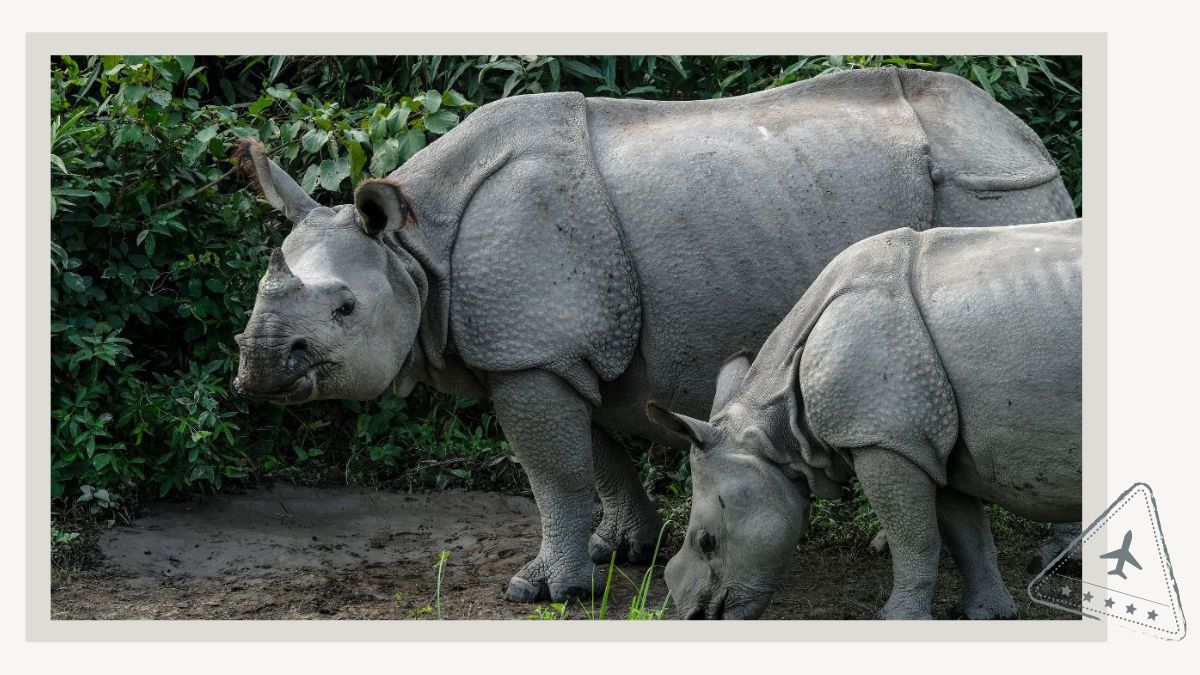
Although Kaziranga National Park and Tiger Reserve has over 120 tigers, they are usually tough to spot due to the tall grasslands in the region.
So why are we including it in our list for national parks with the best chance to spot tigers in India?
Well that’s because Kaziranga National Park is a natural marvel, a UNESCO World Heritage site and one of the most unique wildlife reserves anywhere in the world.
As far as I am concerned, Kaziranga National Park should be on the travel bucket list of all wildlife enthusiasts from world over.
Firstly, it is home to the largest population of one-horned rhinoceros in the world which at last count was over 2400.
Then of course there are the ever increasing numbers of tigers. If that is not enough, it is also home to Asiatic Elephants, Wild Water Buffalos and Swamp Deers in large numbers.
If even that is not good enough for you, the extremely rare golden tiger was spotted at Kaziranga National Park in the year 2020. The sighting of the golden tiger sent the wildlife enthusiasts world into a complete frenzy.
Apart from this, the park is extremely rich on various species of flora and fauna including exotic birds and an overabundance of incredible wildlife.
Kaziranga National Park is positioned on the banks of the famous Brahmaputra river and even has river dolphins in its waters.
Kaziranga National Park is located in the north-east state of Assam in India.
To reach Kaziranga National Park, you need to take a flight to the city of Guwahati. From there, it is about 210 kms that takes approximately 5 hours by road.
Timings:
Kaziranga National Park is a rare park that is open 24 hours on all days. However, there is specific timings for Jeep and Elephant safaris.
For Jeep Safaris: 7am to 9.30am and 1.30pm to 3.30pm
For Elephant Safaris: 5.30am to 7.30am and 3pm to 4pm
Best time to visit:
The best time to visit Kaziranga National Park is between November and early March.
Note that Kaziranga National Park may remain closed during the monsoon months from mid-May to end-September.
6) Kanha National Park
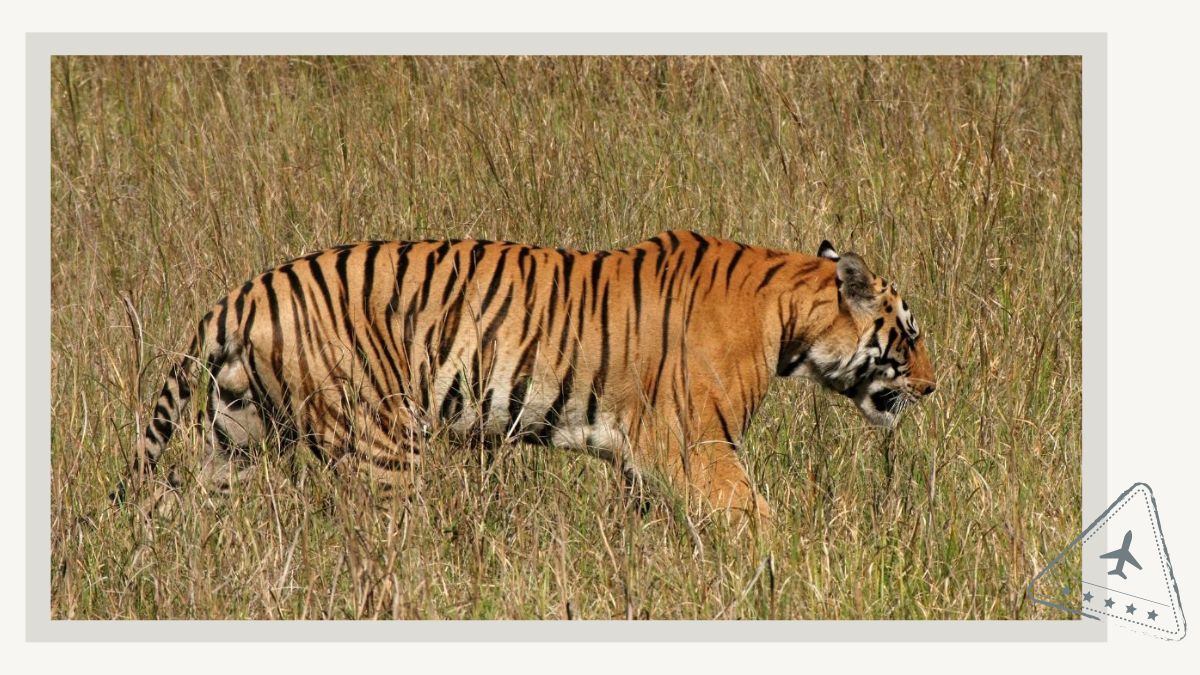
Kanha National Park is situated in central India in the state of Madhya Pradesh.
The park is famous for its population of Royal Bengal Tigers and Indian Leopards.
However, what makes Kanha National Park truly popular is because Rudyard Kipling’s The Jungle Book is said to have been inspired from this tiger reserve.
The forest landscape that you read about in The Jungle Book and its residents are all inspired by the landscape and inhabitants of Kanha National Park. So if you like many others around the world have been intrigued by the story of The Jungle Book, then Kanha National Park becomes a must-visit.
The interesting thing is there are believed to be over 500 tigers in the state of Madhya Pradesh and hence its largest and most popular tiger reserves are a hotspot for tourists and tiger sightings.
Timings:
Kanha National Park is open from 8am to 10pm every day.
For Jeep Safaris, the timings are Sunrise to 11am and 2pm to Sunset.
Sunrise and sunset timings depend upon the season. The park is closed to visitors from mid-June to end-September due to the monsoon months.
Best time to visit:
From tiger sighting point of view, the best months to visit Kanha National Park are April and May.
However, for a more pleasant experience escaping the blistering heatwave of the summer seasons, many tourists prefer the winter months from early November to early March.
Where to Spot the White Royal Bengal Tiger in India?
Sundarbans National Park
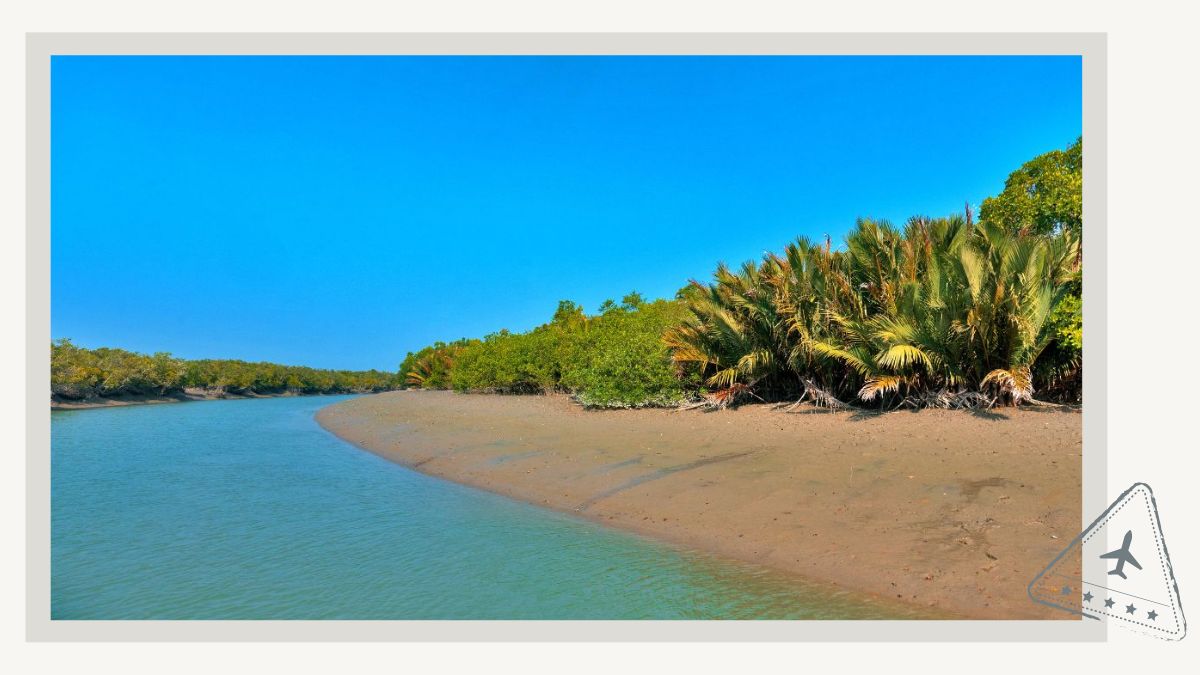
White tigers are not just majestic but exuberate pure elegance. It is speculated that the last remaining white tigers in the wild are in Sundarbans National Park in the state of West Bengal in India.
White tigers are said to have originated in the state of Madhya Pradesh. For long, people thronged to the tiger reserves of the state specifically Bandhavgarh National Park for a chance to spot the white tiger.
However, no white tiger has been spotted in the wild in many years.
The last remaining possibility is the UNESCO World Heritage site of Sundarbans National Park.
Sundarbans is another natural wonder. It is situated in a remote location in the northeast region of West Bengal. Although majority of Sundarbans National Park falls in India, a considerable part of it is in Bangladesh.
A trip to the Sundarbans National Park is for the true wildlife enthusiasts and adventure lovers.
The forests of Sundarbans is impenetrable. Hence the only way to go for a tiger safari here is via boat through the confluence of the rivers Padma (Ganga), Brahmaputra and Meghna.
In fact, the Sundarbans is most famous for being the largest mangrove in the world formed in the delta of the three great rivers. There is nothing like it anywhere else in the world.
Since you can’t go on a safari on land, you need to book a boat to go through the rivers for a chance to spot the white tiger or any of the Royal Bengal Tigers in the forest.
The boat safari feels like being part of one of those adventure movies where a group of enthusiasts go in search of a creative that is believed to be real but is now only part of myths and legends.
You can even stay inside the boat overnight in Sundarbans for a considerable fee.
Although tiger sightings are rare as you have to wait for them to come near the river banks, Sundarbans does not disappoint overall due to the adventure and number of other wildlife you can experience in the national park.
Sundarbans is filled with Gangetic river dolphins, leopards, rhinoceros, wild buffalos and of course the tiger.
Timings:
Usual boat safari timings in Sundarbans National Park is from 8.30am to 4pm.
There are services where you can stay in the boat overnight and these need to be booked well in advance.
Best time to visit:
Best time to visit Sundarbans National Park is from mid-October to April.
Note the months of October, March and April are quite hot while the rest of the months have an extremely pleasant climate. However, unlike other national parks, since you are in a boat with extensive covering and open river waters, it does not feel too bad even in the summer months.
How to increase your chances of spotting the tiger?
I would like to reiterate that spotting a tiger in the wild is a rare sight. To increase your chances of sighting the great beast, please try the following.
1) Always book at least 4 tiger safaris over 2 days – one morning safari and one early evening safari on each day.
There are people who sight the tiger on their first safari itself and there are those who haven’t spotted a tiger in 10 attempts. So keep that in mind.
2) Except for a couple of tiger reserves, all others offer elephant safari as well along with the usual jeep safaris.
You may want to opt for at least one elephant safari out of your multiple safaris as the added height gives a great perspective of the forest.
Note though that if you end up facing one side of the elephant, you will not be able to see the other side and miss out on the tiger even if it is really close.
3) Please remain quiet and vigilant while on the safari. This is not just to respect the wildlife but to also ensure you do not miss out on any of the incredible animals and birds in each national park.
4) Keep your cameras ready with the flash strictly switched off. Last thing you want is to spot the tiger and see it slip away while you set your camera.
5) If you can bare the heat, summer months are better for tiger spotting as all animals prefer coming out in search of water. Winter months though are super fun and relaxing and is best for the overall experience.
6) Listen to the various calls in the wild. One of the incredible aspects of being in a safari in India is that you can witness various animals warning each other of the presence of a predator to keep everyone safe.
Many safari drivers listen to the calls in the forest to figure out if a tiger is nearby.
The distinct noises made by each variety of animal to warn others is in itself an exhilarating experience.
Final thoughts
India has the highest population of tigers in the world. A sharp increase in the tiger population over the past decade has been one of the true success stories of wildlife conservation in the country.
To sight these proud, majestic big cats in the wild is a thrill of a lifetime.
It is highly recommended that you try not just one but a couple or more tiger reserves, not just to spot tigers in India, but also experience the country’s incredibly rich wildlife ecosystem.

